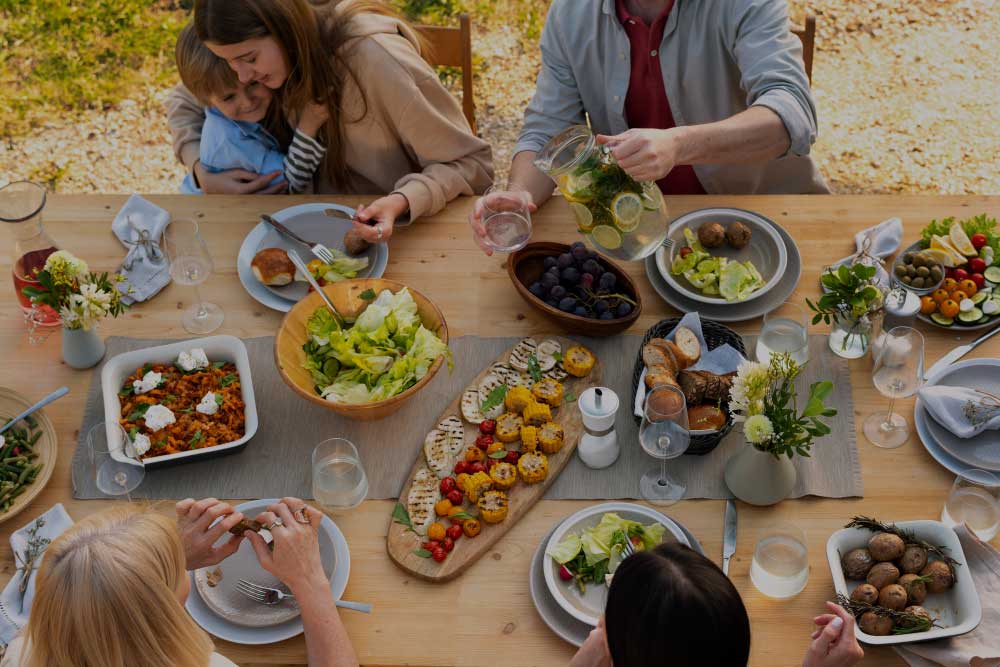Farmhouse Dining Room Table Remodel
A story of sawdust, sentimentality, and six coats of “accidentally antique” stain. So. I did the thing. I remodeled our dining room table.
Not like “bought a new one from a rustic-chic catalog” remodeled. No. That would be too easy. I’m talking full-blown, sand-it-down, strip-the-stain, discover-seven-generations-of-crumbs kind of remodel. The kind where you question your choices, your sanity, and your ability to use a palm sander without losing a fingertip.
Let’s rewind.
The Table That Was (and Barely Still Is)
Our dining table has been with us since before the homestead dream became real. It’s where we signed our property deed. Where we ate spaghetti straight from the pot after 12-hour fencing days. Where we played cards during power outages and taught the kids how to measure biscuit dough.
It’s also where years of life happened-coffee rings, crayon graffiti, chicken feed dust, and one unforgettable sourdough starter explosion. She was loved. She was…well, used.
And one day I looked at it and thought: “She deserves better.”
Step #1: The Delusion
Like all good DIYs, it started with a Pinterest board and an inflated sense of confidence.
I told myself it would take a weekend. Two days, max. “Just sand it down, slap on some stain, maybe seal it with a matte poly. Boom. Farmhouse chic.”
HAHAHAHA.
(If you’ve ever taken a power sander to 15-year-old varnish, you already know where this is going.)
Step #2: The Sanding Saga
Let’s talk about sanding. Specifically: how it destroys your will to live.
I borrowed a belt sander from a neighbor (thanks, Carl) and spent six straight hours covered in dust, sweating through my flannel, and being serenaded by the comforting screech of old varnish being ground to oblivion.
At one point, I forgot what my original goal even was. I was just a feral goblin with a mission and lower back pain.
Eventually-eventually-the wood underneath emerged. Glorious, raw, full of character and old nail scars that I chose to call “authenticity.”
Step #3: The Color Crisis
Choosing a stain color should be easy, right? I mean, it’s wood. You pick “walnut” or “cherry” or “whatever Joanna Gaines is into right now.”
Wrong.
I bought six samples. Tested all of them. Every single one looked like a completely different color in daylight, candlelight, overcast gloom, and barnlight (which is a real thing, trust me).
After three rounds of testing, crying, and holding boards up to the wall while whispering, “Is this the one?” like it was a romance novel, I settled on a rich, not-too-orange, not-too-cold chestnut stain called… “Barnwood Haze.”
(Yes, I also hate myself for falling for the name. But it worked.)
Step #4: The Stain That Would Not Dry
And waited.
And waited.
Turns out, our lovely old farmhouse is just drafty and damp enough that the stain refused to dry on one side of the table. I actually had to flip it every few hours like a human rotisserie chicken just to get it even.
Pro tip: If the air smells like chemical regret for more than 72 hours, open all the windows. Even in January.
Step #5: Sealing the Deal
This part was oddly satisfying. I used a water-based polyurethane with a matte finish, which basically translates to: “This looks expensive, but your toddler can still spill juice on it.”
I did three coats. Then two more for the trauma. I don’t know if it was necessary, but it felt like a good idea, and honestly, I needed the closure.
Step #6: The Reveal (Cue the Music)
After nearly two weeks of chaos, the table was finally done.
She looked gorgeous. Like the lead character in a farmhouse Netflix series who just had a glow-up montage set to acoustic banjo music. The wood grain popped. The edges were gently worn. And most importantly: she was still ours.
Same table, same memories—just shinier and less sticky.
Lessons I Learned Along the Way:
#1. Nothing is ever just a weekend project.
If you think it is, double your time estimate, then add a day for existential dread.
#2. The right tools matter.
Do not try to hand-sand a farmhouse table unless you’re actively seeking revenge on your own body.
#3. Imperfections are the point.
The knicks, dings, and uneven stain marks? That’s the soul. That’s the story.
#4. Your dining room is the heart of the home.
It’s where the good stuff happens: messes, meals, mishaps. Remodeling it is not about making it perfect. It’s about making it yours—again.
So… Should You Remodel Your Farmhouse Table?
Absolutely. If you have the time, a forgiving family, and a high tolerance for dust in your bra, go for it.
Because while the farmhouse lifestyle is often romanticized with linen aprons and heirloom tomatoes, it’s also about grit. Resourcefulness. Bringing old things back to life. Making beauty out of the used and loved.
And trust me: every time I sit at this table with a mug of coffee and a half-written grocery list, I remember that I did this. With my own two hands. And a borrowed sander. And six test jars of stain I’ll probably never use again.
But hey. That’s homestead life for you. Never quite tidy. Always a little chaotic. And somehow, absolutely worth it.


Leave a Reply